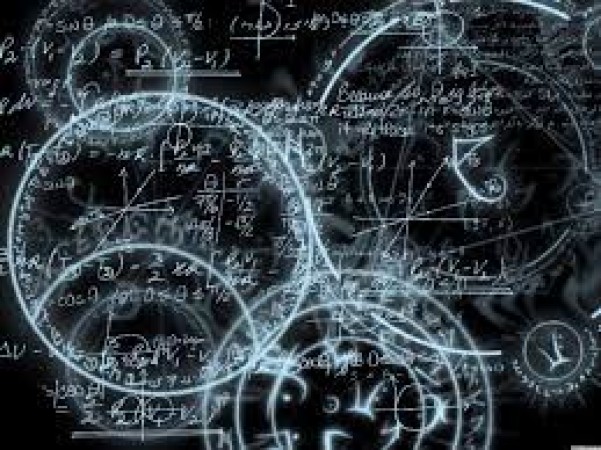
Mathematics is a subject that holds the key to unlocking the mysteries of the universe. It provides us with a language to describe the world around us and plays a crucial role in various fields, from science and engineering to finance and technology. In this article, we will explore some amazing maths facts and formulas that showcase the beauty and power of this discipline.
The Fascinating World of Numbers
Prime Numbers
Prime numbers are fascinating mathematical entities that have intrigued mathematicians for centuries. These numbers can only be divided by 1 and themselves, with no other divisors. The discovery of prime numbers has been crucial in the field of cryptography and plays a fundamental role in internet security.
Fibonacci Sequence
The Fibonacci sequence is a series of numbers in which each number is the sum of the two preceding ones. This sequence appears in various natural phenomena, such as the arrangement of leaves on a stem, the spirals of a pinecone, and even the proportions of the human body. The Fibonacci sequence demonstrates the connection between mathematics and nature.
Golden Ratio
The golden ratio, also known as the divine proportion, is an irrational number approximately equal to 1.6180339887. It is a ratio that appears repeatedly in art, architecture, and nature. Many famous works of art, such as the Parthenon in Athens and Leonardo da Vinci's Vitruvian Man, are based on the golden ratio. This ratio is believed to create aesthetically pleasing and harmonious compositions.
Mind-Boggling Mathematical Formulas
Pythagorean Theorem
The Pythagorean theorem is a fundamental formula in geometry that relates the lengths of the sides of a right triangle. It states that the square of the hypotenuse (the side opposite the right angle) is equal to the sum of the squares of the other two sides. The Pythagorean theorem has countless applications in various fields, including navigation, architecture, and physics.
Euler's Formula
Euler's formula is a remarkable equation that connects five of the most important mathematical constants: e (the base of the natural logarithm), π (pi), i (the imaginary unit), 1 (the additive identity), and 0 (the additive identity). It is often considered one of the most beautiful formulas in mathematics due to its elegant simplicity and the deep connections it reveals.
Quadratic Equation
The quadratic equation is a polynomial equation of the second degree. It is widely used to solve problems involving parabolic trajectories, optimization, and motion in physics. The quadratic formula provides a method for finding the solutions to this equation, and it has been instrumental in numerous scientific and engineering applications.
Unbelievable Mathematical Discoveries
Zero and Infinity
The concepts of zero and infinity are both intriguing and mysterious. Zero represents the absence of quantity, and its discovery revolutionized mathematics. It serves as the foundation for many mathematical concepts and allows for the development of advanced calculations and theories. On the other hand, infinity represents boundlessness and the concept of endlessness. It plays a significant role in calculus and is crucial for understanding limits and infinite series.
Imaginary Numbers
Imaginary numbers, denoted by the symbol "i," are numbers that, when squared, yield a negative result. Initially deemed impossible, imaginary numbers emerged as a powerful tool in mathematics and are now used extensively in various fields, including electrical engineering, quantum mechanics, and signal processing.
Chaos Theory
Chaos theory explores the behavior of dynamic systems that are highly sensitive to initial conditions. It studies complex and unpredictable phenomena, such as weather patterns, population dynamics, and the stock market. Chaos theory has revolutionized our understanding of nonlinear systems and their inherent unpredictability.
Real-Life Applications of Mathematics
Fractals in Nature
Fractals are complex geometric shapes that exhibit self-similarity at different scales. They can be found abundantly in nature, from the branching patterns of trees and the intricate shapes of snowflakes to the structure of coastlines and the formation of clouds. Fractals have practical applications in computer graphics, data compression, and the study of complex systems.
Cryptography:
ryptography is the science of secure communication, and it relies heavily on mathematical principles. Mathematical algorithms and formulas are used to encrypt and decrypt sensitive information, ensuring its confidentiality and integrity. Cryptography plays a vital role in online transactions, digital signatures, and data protection.
Game Theory:
Game theory is a branch of mathematics that analyzes strategic interactions between decision-makers. It has applications in economics, politics, biology, and various other fields. Game theory helps us understand how individuals and organizations make decisions, negotiate, and compete. It provides valuable insights into human behavior and helps optimize outcomes in complex scenarios. Mathematics is a captivating discipline that uncovers the hidden patterns and structures of the world. From prime numbers and the Fibonacci sequence to mind-boggling formulas like the Pythagorean theorem and Euler's formula, mathematics continually surprises us with its elegance and versatility. Its applications extend far beyond the confines of the classroom, shaping our understanding of nature, technology, and society.
The Feminist Themes in "Jane Eyre" by Charlotte Brontë
Holographic Displays: Creating Interactive Visual Experiences
The Ethics of AI: Ensuring Responsible and Ethical Use of Artificial Intelligence